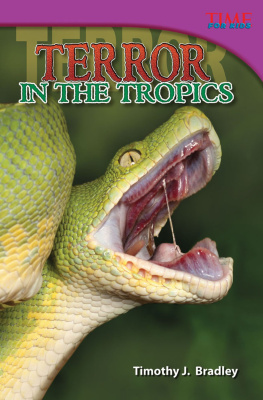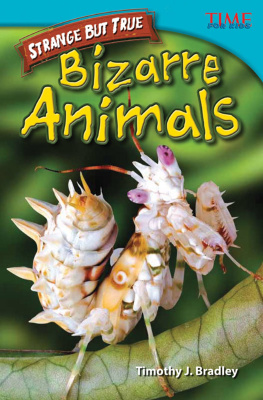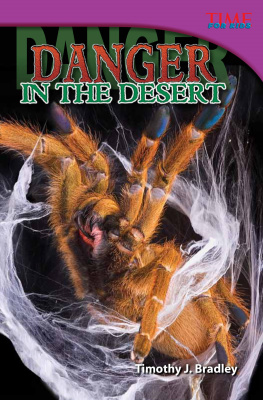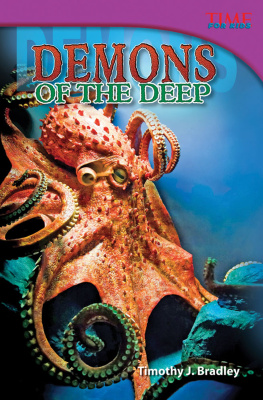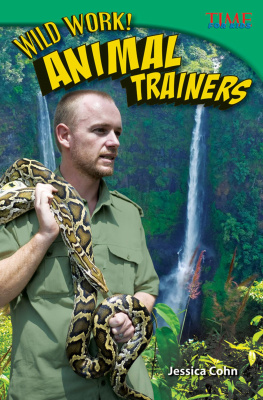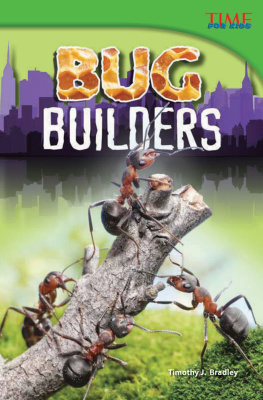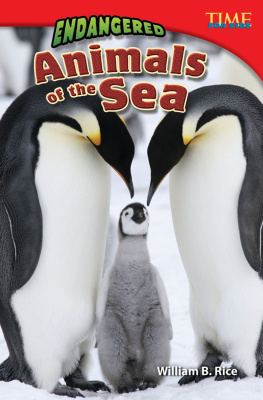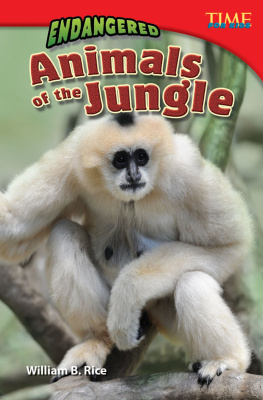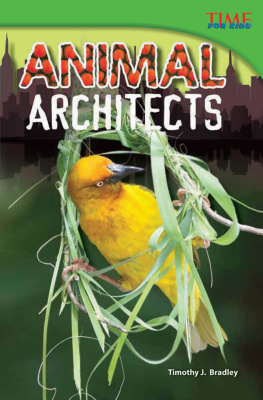
Timothy J. Bradley


Teacher Created Materials
5301 Oceanus Drive
Huntington Beach, CA 92649-1030
http://www.tcmpub.com
ISBN 978-1-4333-4823-5
2013 Teacher Created Materials, Inc.
Consultants
Timothy Rasinski, Ph.D.
Kent State University
Lori Oczkus
Literacy Consultant
Tejdeep Kochhar
High School Biology Teacher
Based on writing from
TIME For Kids. TIME For Kids and the TIME
For Kids logo are registered trademarks of
TIME Inc. Used under license.
Publishing Credits
Dona Herweck Rice , Editor-in-Chief
Lee Aucoin , Creative Director
Jamey Acosta , Senior Editor
Heidi Fiedler , Editor
Lexa Hoang , Designer
Stephanie Reid , Photo Editor
Rane Anderson , Contributing Author
Rachelle Cracchiolo , M.S.Ed., Publisher
Image Credits: pp.25 (bottom), p.38 (right),
p.39 (bottom) Getty Images; pp.1011,
22, 35, 48 Timothy J. Bradley; pp.1617,
Courtney Patterson; p.35 (top) iStockphoto;
p.34 EPA/Newscom; pp.15, 1819 (bottom),
pp.3233 Photo Researchers, Inc.; All other
images from Shutterstock.
Synched Read-Along Version by:
Triangle Interactive LLC
PO Box 573
Prior Lake, MN 55372
ISBN-13: 978-1-68444-897-5 (e-book)

Table of
Contents
Cities in Nature ................
Insect Cities ....................
Mammal Cities ................
Miniature Cities ...............
A Wild World .................
Glossary ......................
Index ........................
Bibliography .................. 46
More to Explore ...............
About the Author ..............

Cities in
Nature
Meerkats live in groups.
A city is a place where many people live
together. Cities have everything humans
need for work, play, and survival. And cities
can be very fun places to live.
Humans arent the only animals that build
cities. Some animals live in large groups that
are like human cities. Animals that live together
can watch out for one another. They can sound a
warning when there is danger. Its easier to find
food and care for babies when theres help.
In cozy rabbit warrens , busy beehives, and
action-packed anthills , animals live together.
The world is full of wild cities.

New York City is the largest human
city in America. Over million
people live there.
In what ways do you think animal
communities are like human cities?
What do you think are the advantages
of living in a city?
How can we learn from the way
animals build their cities?
Thousands of ants live in
and below one anthill.

Insect
Cities
Some insects live together in groups.
Thousands of ants share a single anthill.
Hundreds of hornets may live in one nest.
Together, they can find food. In large
numbers, they can defend the colony
against attacks.
Insects that live together are eusocial .
Eusocial insects evolved to build complex cities.
The ancestors of these insects that lived alone
died easily. Those that worked together lived
longer. For ants, wasps, and termites, living
together means survival.
bees covering their hive

Friendly Fliers
Only about two percent of insects are eusocial.
But the populations of these insects are very
large. These insects make up the majority of all
insects.
ants
wasps
bees
termites
An insect is a type of
arthropod . Insects
have an exoskeleton ,
segmented body, and
jointed legs. Their
bodies are divided
into three parts: head,
thorax, and abdomen.
They have wings and
three pairs of legs.
legs
abdomen
thorax
head
wings
exoskeleton
Insect Basics
By climbing on each other, ants work together
to form a bridge between two leaves.

Inside the Hive
Honeybees build cities in the form
of hives. A beehive is where bees make
honey and raise their young. Worker bees
fly away from the hive to look for flowers and
gather pollen and nectar. They bring the pollen
and nectar back to the hive. That is where nectar
is made into honey. The bee larvae eat the honey.
Worker bees do a dance to tell other bees where to
find the flowers.
The honeycombs inside the hive are made up of
six-sided cells . Bees eat the honey. They change the
sugar into wax. The bees chew the flakes of wax until
they soften. Then the bees use the wax to build more
cells in the hive.
a bee collecting nectar

Building
Without a Plan
Instincts are actions that animals
are born knowing how to perform.
Instincts tell an animal to hunt.
Instincts tell an animal to find a
mate. Instincts drive tiny insects
to work together to build a large
home for themselves.
an enormous termite mound
Some types of bees live
alone. These solitary
bees do not live as
long as bees that live
in groups.



